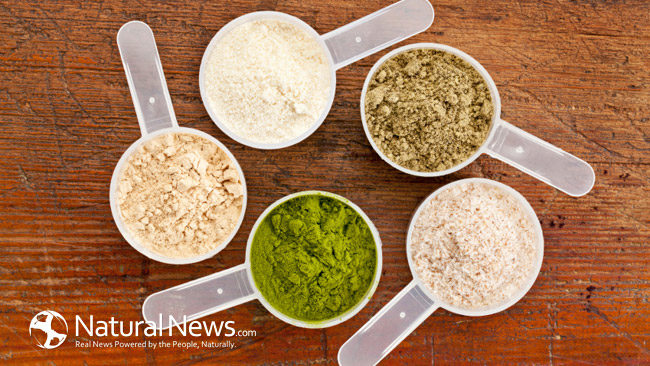Talk to any lad or gal in the gym these days, young or not so young, and you will find fitness goals as vast and individual as snowflakes on a snowy winter morning. Many come in with the goal of just wanting to stay fit and slim while others want to pack on as much beef as their genetic potential will allow. Whatever one’s fitness goals, when it comes to diet, there is always one common denominator: protein . Protein consists of those amazing building blocks we need for repair and growth: Amino Acids.
THE ESSENTIALS
There are actually 100 different types of amino acids that are found in nature. However, the body only uses 20 of them with 9 of the 20 amino acids being categorized as “essential” because the human body cannot produce them and therefore, we must obtain these building blocks of protein from the foods we consume. Below is a table categorizing both the essential and non-essential amino acids the body depends on for growth and survival.
For lacto–ovo vegetarians, obtaining all the essential amino acids in the diet is not a problem since lacto-ovo vegetarians consume dairy and eggs, which contain an abundant source of all nine essential amino acids. For vegans that eliminate dairy and eggs, obtaining these amino acids can be tricky although careful meal planning will provide all the amino acids an individual needs on a 100% plant based diet.
Note: Just because the amino acids on the right of the table are categorized as “non-essential” does NOT mean they are not needed for growth, bodily function and human survival-they are! Non-essential simply means the body can produce these amino acids on its own without food by synthesizing them from other amino acids and substances in the human body.
The trick to getting all the amino acids on a vegan diet can be done easily by just combining certain plant foods. Before we look at the example below on how to do this, I would like to expel a myth concerning “complete and incomplete proteins”:
COMPLETE OR INCOMPLETE?
You may have heard that foods containing all the essential amino acids are classified as complete proteins while foods that are plant based lack one or more of the essential amino acids and thus are classified as “incomplete”. This is not exactly true. The fact is that all plant based foods are complete proteins; but plant based foods are generally so low in one or more of the essential amino acids that they cannot be efficiently utilized by the body. Therefore, plant-based foods must be combined with other plant-based foods to supply the essential amino acids in the correct amounts the body needs for survival, function and growth. Now let’s look at an example in the table below using legumes, grains and the following four amino acids found in these foods classified as essential:
• Isoleucine (Ile)
• Lysine (Lys)
• Methionine (Met)
• Tryptophan (Try)
Note in the table above that legumes do not contain the essential amino acids Methionine (Met) nor Lysine (Lys) in substantial amounts to be utilized by the body. Grains on the other hand, are a rich source of these two amino acids but lack Isoleucine (Ile) and Lysine (Lys) which legumes do contain in abundant amounts. However, if we put grains and legumes together in a meal, this creates a complementary protein source. It is that simple when combining plant-based foods to create a complete protein.
Note: You do not need to eat complementary plant based proteins simultaneously at the same meal. The key to getting all the essential amino acids in a plant-based diet is getting these complementary proteins together every day in your daily diet.
So as you can see from the example of legumes and grains, it is not difficult to combine plant based proteins in a vegan diet to make sure you are getting all the essential amino acids needed by the body .
START CHOWING DOWN
For those of us who are omnivores (eating a diet consisting of both plant based and animal foods) getting all the essential amino acids your body needs on a daily basis need not be a difficult chore. Organic grass fed beef, dairy and eggs will give you all the amino acids and proteins your body needs on a daily basis. And If you are a bodybuilder as I am, be sure to eat more often but less at each meal. Eat one gram of protein per pound of bodyweight. So for example, if you weigh 170 pounds, strive to get 170 grams of protein every day spaced out over 4 or 5 meals. Normally, the body cannot assimilate more than 25-30 grams of protein at one meal so you needn’t eat huge protein meals.
LET’S NOT FORGET THE OTHER TWO
Everyone’s diet whether they be a fitness buff or not should be rich in protein and essential amino acids. But let’s not forget the importance of the other two macro nutrients: carbs and fats. Clean burning carbs will give you all the energy you need and are “protein sparing”. Fats are needed for healthy nerve and joint function. How much carbs or healthy fats you need on a daily basis will depend on your own unique makeup, activity level, and age. Experiment and find out whether you do better with carbs or fats for energy and then adjust each one according to your own unique needs.
Hit the gym 4- 5 times a week to build calorie burning muscle and don’t forget about those all too important amino acids for growth. Good Luck!
References:
Cat, B. (2015, September 11). Amino Acids Guide! Retrieved from Bodybuilding.Com: http://www.bodybuilding.com/fun/catamino.htm
University of Arizona. (2003, September 2003). The Chemistry of Amino Acids. Retrieved from The Biology Project: http://www.biology.arizona.edu/biochemistry/problem_sets/aa/aa.html
What are Amino Acids? (n.d, n.d n.d). Retrieved from amino-acids studies.com: http://www.aminoacid-studies.com/amino-acids/what-are-amino-acids.html





